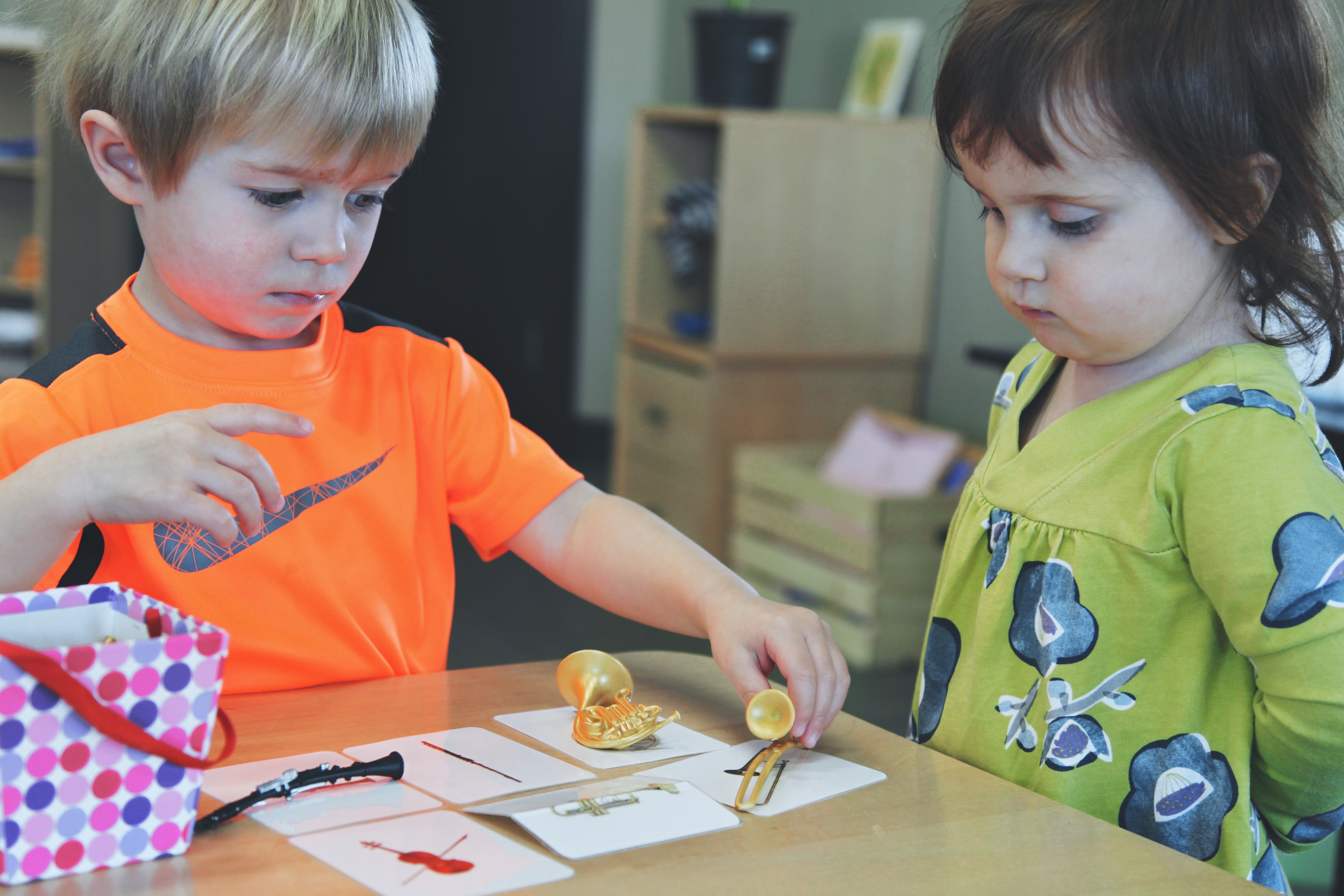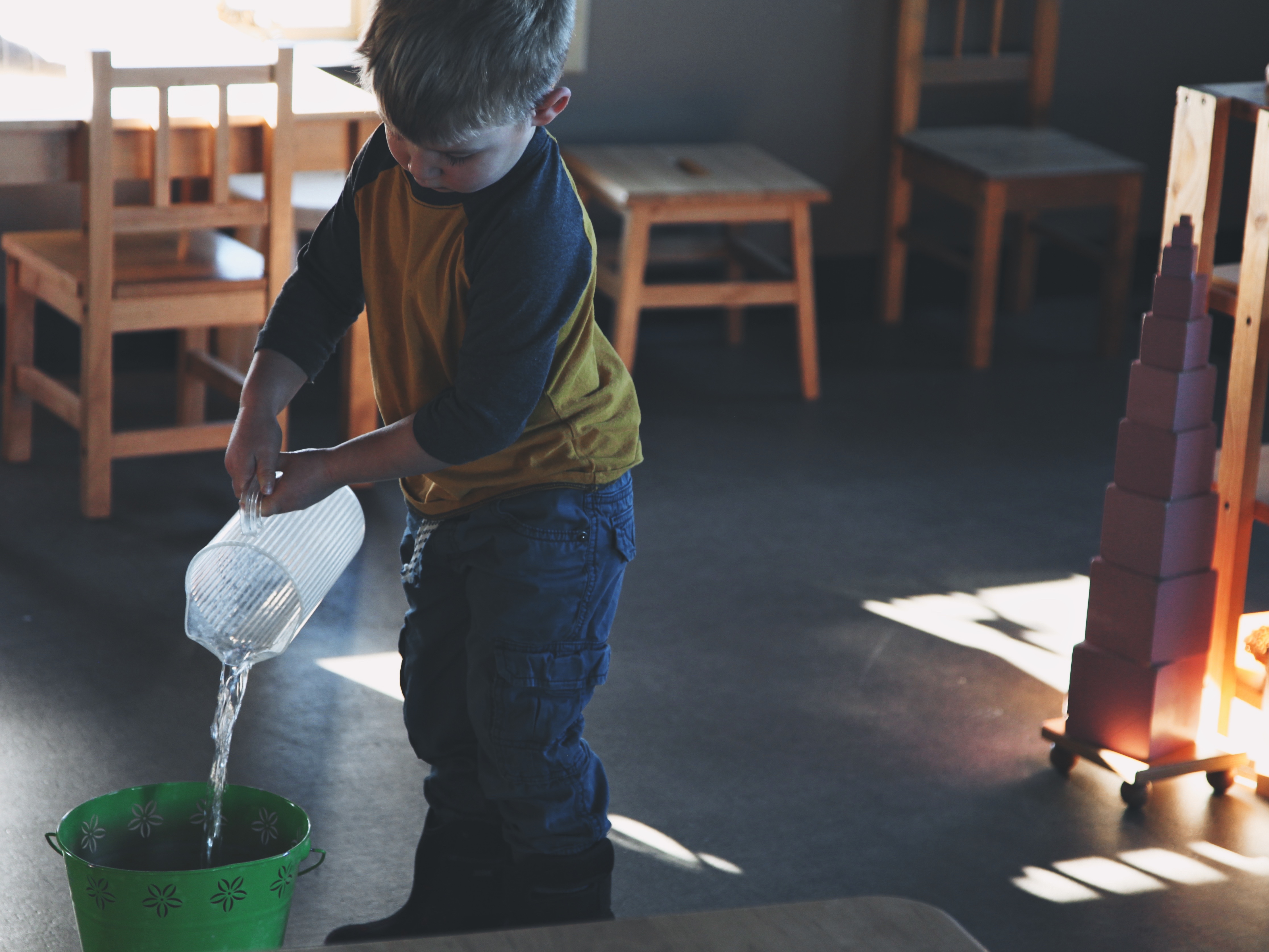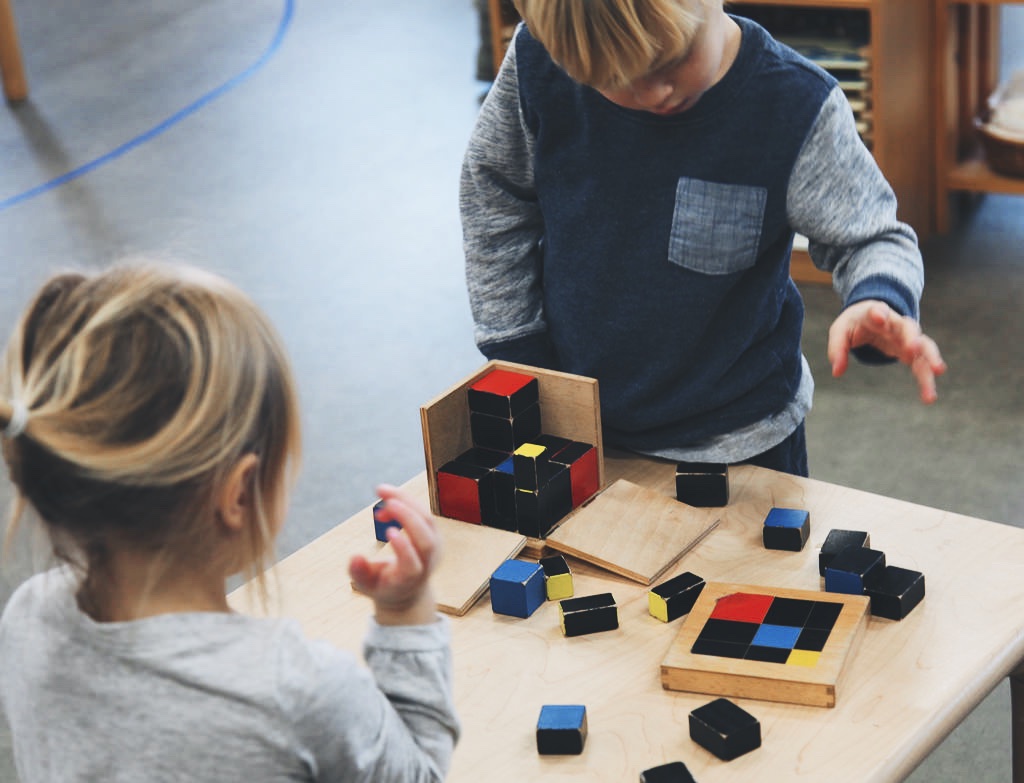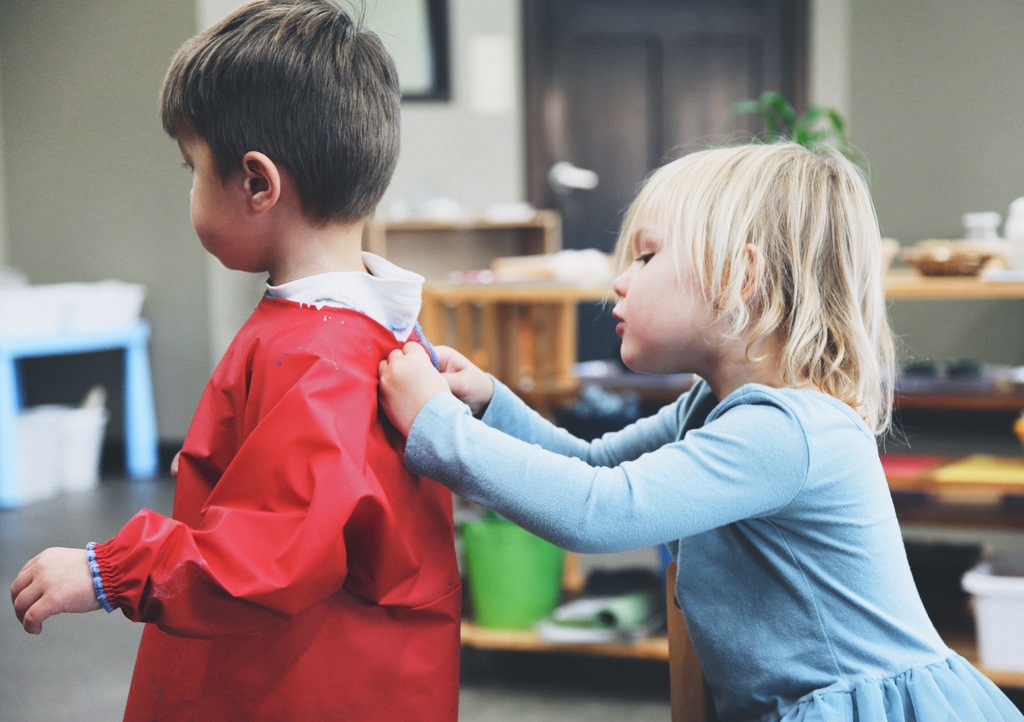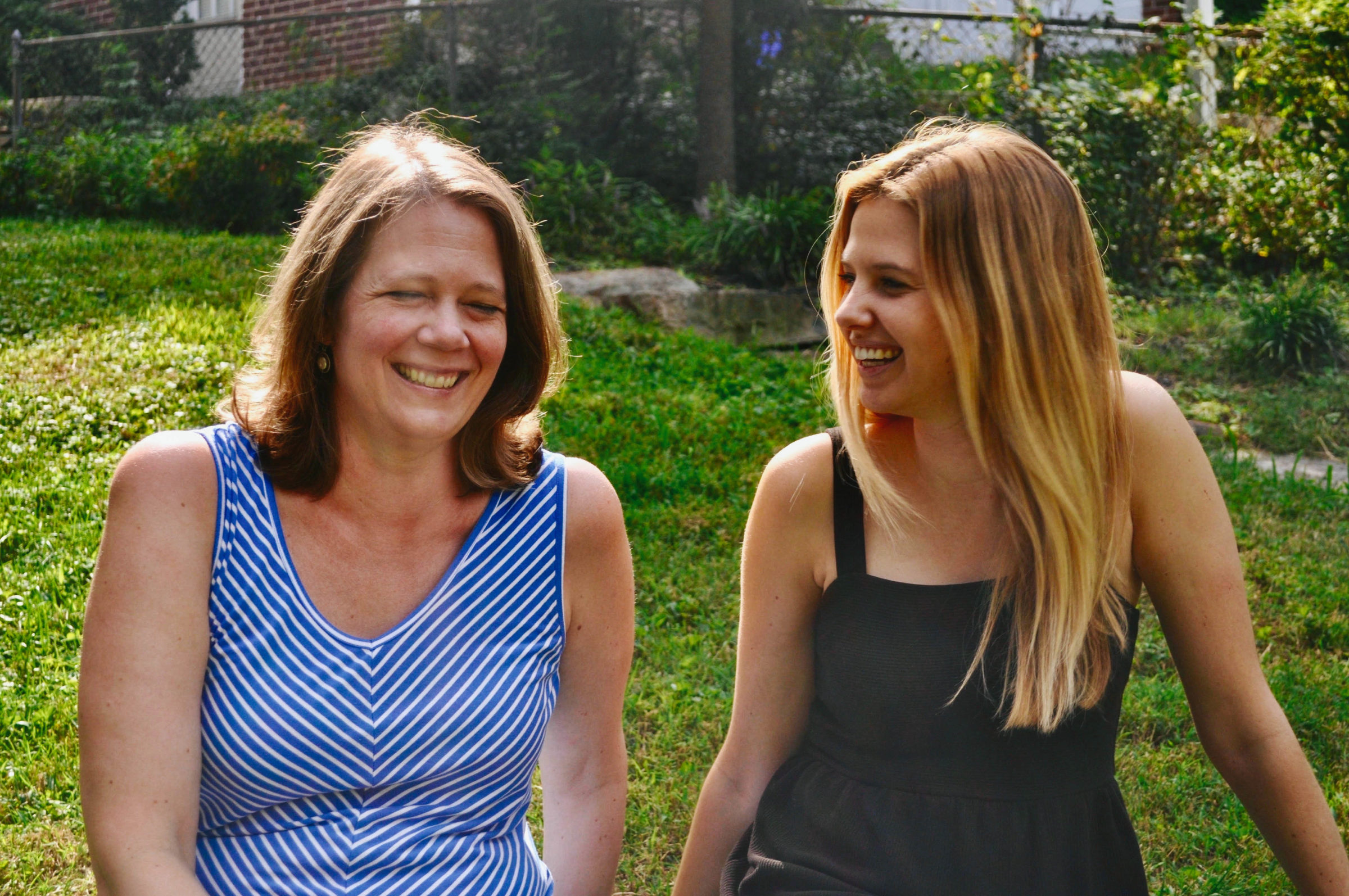The Social Side
Podcasts
How do we tend to the empathetic nature of children, the human desire to be in relationship with others, the important social education? Montessori is education of the Whole Child. Social interactions, development of independence, learning academics are not individual skills, but closely tied, and we work to support the growth in these areas simultaneously, for each child.
We thought we’d look at a few specific ways the Montessori classroom supports pro-social growth. Here are ten, and there’s a podcast discussing each of these points in more detail.
1) The Montessori Classroom is a community, a small family. Since children spend years in the same classroom they learn and grow together. The older children usher in the new children, the younger children look up to and learn from observing the older children. We don’t need to talk about “how to be” on those first few days, the child is aided along simply by being in the presence of more experienced children who know how to live and work in this environment.
2) The children look out for one another. They worry if someone is upset, ask after one another if someone is absent, know when a friend is going on vacation. When a child returns, he’s greeted by friends eager to welcome him back.
3) Observation is supported as a learning opportunity. The Montessori classroom honors the unique learning that happens through observation — observation by adults, observation by children. If a classmate is observing my work, sometimes the movements become more precise and thoughtful. If I am the observer, perhaps my interest and desire to work with this material will be heightened. Even if my turn to use this material is far down the road, the positive memory is established.
4) Children are encouraged to ask for and to offer help. Everyone has something to add. Part of the benefit of having a higher adult-to-child ratio in the classroom, is that a peer is almost always available to help, when a child isn’t as readily available to swoop in and save the day.
“We all matter and contribute.”
This encourages children to stay with a difficulty longer, identify when this problem is beyond their current skill set, and ask for and accept help. Younger children are also very capable of offering their assistance to older children, such as in tidying a spill, carrying a table, or offering a hug. We all matter and contribute.
5) Children are given tools for problem-solving. An adult doesn’t decide who is going to eat snack or paint next, it’s merely a question of, is it available? This helps children avoid frustration or feelings of unfairness, since the facts of a situation are clear. It helps children be generous and feel emotionally secure.
The whole classroom is shared among the children, and children can only be expected to share if they feel psychologically safe. External, arbitrary, adult limits, such as “I think you’re done with the red crayon/library/counting, it’s time to give someone else a turn” can lead to feelings of unfairness, and the desire to be selfish. If you know you can work with something appropriately until you’re satisfied, you’re less likely to be upset when something is unavailable. You know there will be more opportunities next time, and no one is going to take something away from you.
6) Children are given tools for self-regulation. There is no time out. There are thinking chairs, where children can go independently if they don’t know what work they want to do next, if they want to have a quiet moment, if they’re feeling out of sorts and want some space, to talk about a frustration with an adult
Emotions are part of daily life, and education about them is intrinsic to Montessori through natural experiences. When we’re feeling unpleasant, often what we need is to feel connected to our community, rather than ostracized. Our feelings are recognized and respected, and we’re given tools to work through them.
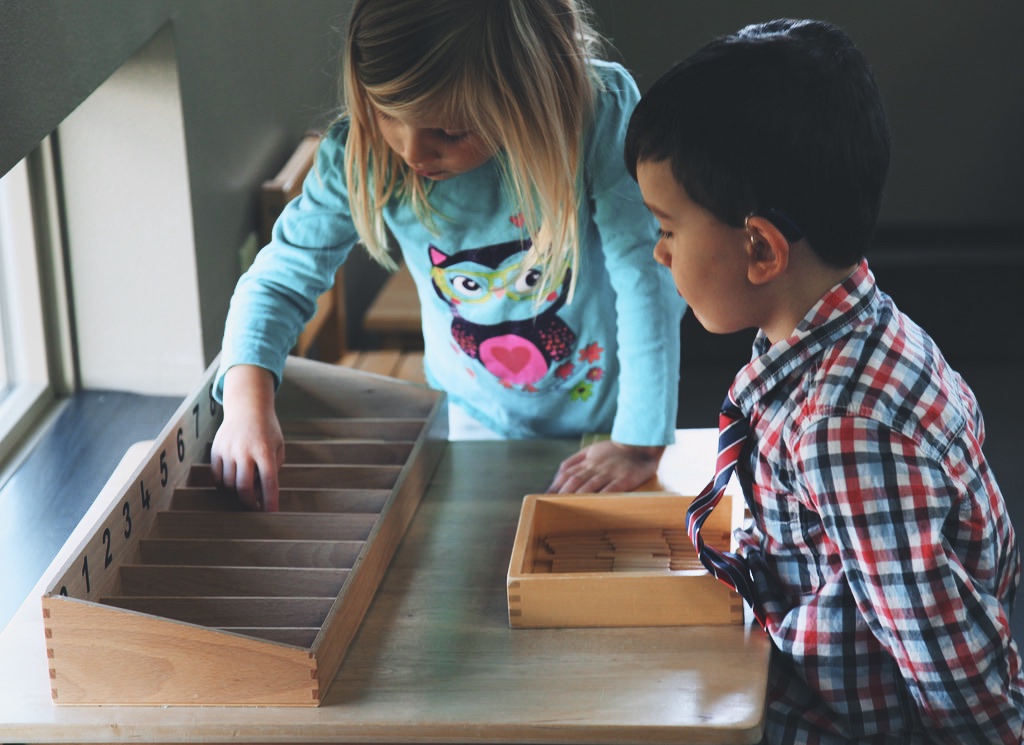
7) Children return work to the shelf ready for the next person to use. Part of this is supporting their own internal sense of order, part of it is care for others. In order to do my best learning, all the tools are available to me. I don’t begin with a material cleaning up someone else’s mess. There is an innate respect for others built into this act of empathy, simply returning things ready for someone else’s best learning to take place.
8) Care of the Environment, essentially tidying, is a fundamental part of the curriculum. Children take great pride in making things nice for one another, and ways to do that are work choices available to the children. When a child washes dishes or sweeps or folds napkins, she’s not only meeting a need in her development, but also making the classroom a pleasant place to be for herself and her classmates.
9) Everyone is encouraged to help as best they are able. If there is a spill or a material out of place, it is not a question of, “I didn’t do it,” but instead, “I know how to fix that!” This is fostered and modeled by adults. “Oh my, someone spilled some water. Good thing I know how to fix that!” “I noticed you have the broom out, would you please be willing to sweep those crackers near the snack table? Thank you for helping!”
10) Positive manners and social interactions are modeled and practiced. In the classroom, we call these “Grace and Courtesy Lessons,” or how we help children learn to be here. Sometimes they’re practical, such as how to use a tissue, and sometimes they’re relational, such as how to offer someone a tissue. Which is relationship-building, “Gross! Blow your nose!!” or “I noticed you might need a tissue. Here you go!” The adults in the classroom are living, breathing Grace and Courtesy Lessons, always acting in the way we’d like the children to, carrying ourselves with decorum, treating others with respect and kindness, ignoring all we’re able to do as adults and limiting our movements to those we’d like emulated by children.
“When a child washes dishes or sweeps or folds napkins, she’s not only meeting a need in her development, but also making the classroom a pleasant place to be for herself and her classmates.”
The social development of children is attended to in natural ways in the classroom, in tandem with the academic development children meet through working with the materials. For more, listen to this podcast!
Written by:
Charlotte Snyder

